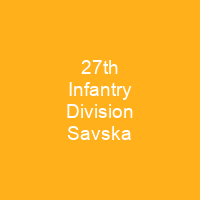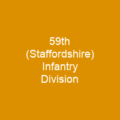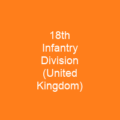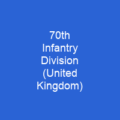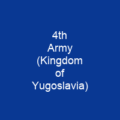Unveiling the Tragic Saga of the 27th Infantry Division Savska
Imagine a formation that was supposed to defend a nation, but instead became a mere shadow of its former self. The 27th Infantry Division Savska, formed in April 1941 during the German-led invasion of Yugoslavia, is one such tale.
The Formation and Its Context
Formed amidst the chaos of war, the 27th Infantry Division Savska was named after the Sava river and was part of the 4th Army. It consisted mainly of ethnic Croat troops who saw the Germans as liberators from Serbian oppression. However, this division lacked modern arms and ammunition, relying heavily on animal transport for mobility—a stark contrast to the mechanized warfare of the time.
Internal Weaknesses and External Pressures
The division began mobilizing on April 3, 1941, but quickly disintegrated due to fifth column actions, rebellion, and desertion. By April 10, 1941, the division was all but destroyed, with only 2,000 men remaining, mostly Serbs. This collapse raises a question: how could such a formation, initially filled with hope, fall so quickly?
Theoretical vs. Practical Reality
During peacetime, the Savska divisional district included several regiments and artillery units. The theoretical wartime organization of an infantry division was vast, encompassing cavalry, artillery, and various support units. However, in practice, these divisions were often undermanned and poorly equipped, relying on draught animals for transport due to a lack of modern vehicles.
The Mobilization and Early Battles
On April 6, the German XXXXVI Motorised Corps launched preliminary attacks along the Drava River. The Yugoslav Army’s efforts were hindered by poor radio communications, sabotage, and internal divisions. By April 7, the Germans had crossed the Drava at Zákány, attacking towards Koprivnica. Despite General Nedeljković’s valiant efforts, the situation remained critical.
The Collapse of Defense
On April 8, the Yugoslav Army launched a counterattack against the Zákány bridgehead but lacked supporting units and artillery. Meanwhile, the 40th Infantry Division revolted, capturing Bjelovar and a large portion of the 4th Army headquarters. This further weakened the position, making it difficult for effective counterattacks.
The Final Days
By April 9, Marić’s division had only about 2,000 troops left, with some units dispersed or effectively ceased to exist. The rebels in Bjelovar used false orders and contacted the Germans by telephone to facilitate their advance. On April 10, General Franjo Nikolić redirected 4th Army units around Zagreb to cease operations or deploy to innocuous positions.
The Fall of Zagreb
Lead elements of the 14th Panzer Division reached the outskirts of Zagreb by 19:30 on April 10, capturing 15,000 Yugoslav troops. The division’s vanguard was quickly encircled by German motorized troops and continued their almost unopposed drive on Zagreb using two routes.
The End of Resistance
On April 11, Nedeljković escaped but the 27th ID had ceased to exist. On April 15, Nedeljković received orders for a ceasefire and all 4th Army troops were ordered not to fire on German personnel. Yugoslavia surrendered unconditionally in Belgrade effective at 12:00 on April 18.
The Aftermath
Almost all Croat members of the division were released by the Germans due to their ethnicity, a stark reminder of the complex political and ethnic dynamics that played out during this tumultuous period. The story of the 27th Infantry Division Savska is a poignant tale of how internal weaknesses and external pressures can lead to the collapse of even the most promising military formations.

The fall of the 27th Infantry Division Savska serves as a sobering reminder of the fragility of military formations and the complex interplay between internal divisions, external pressures, and the harsh realities of war. It is a story that continues to resonate in the annals of history.
You want to know more about 27th Infantry Division Savska?
This page is based on the article 27th Infantry Division Savska published in Wikipedia (retrieved on November 30, 2024) and was automatically summarized using artificial intelligence.
